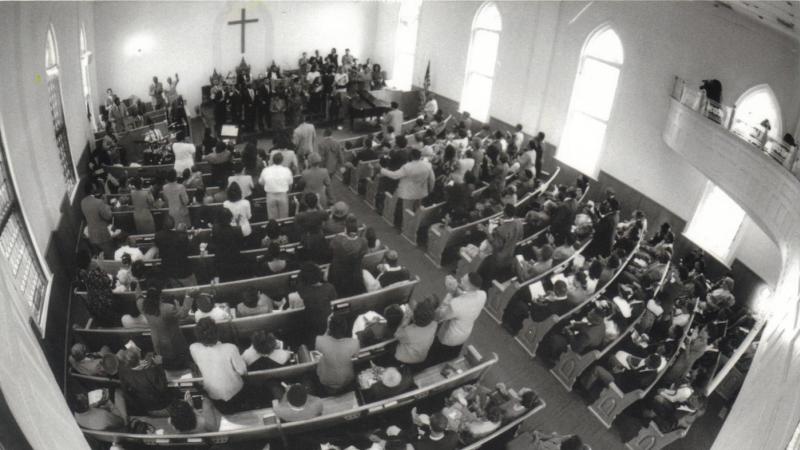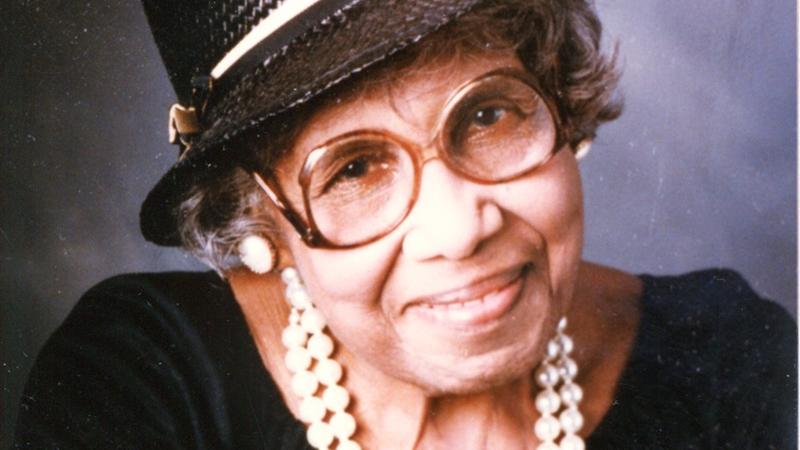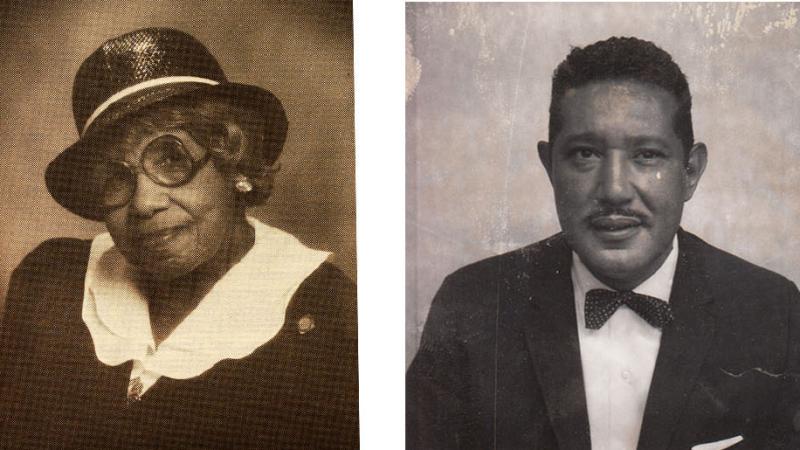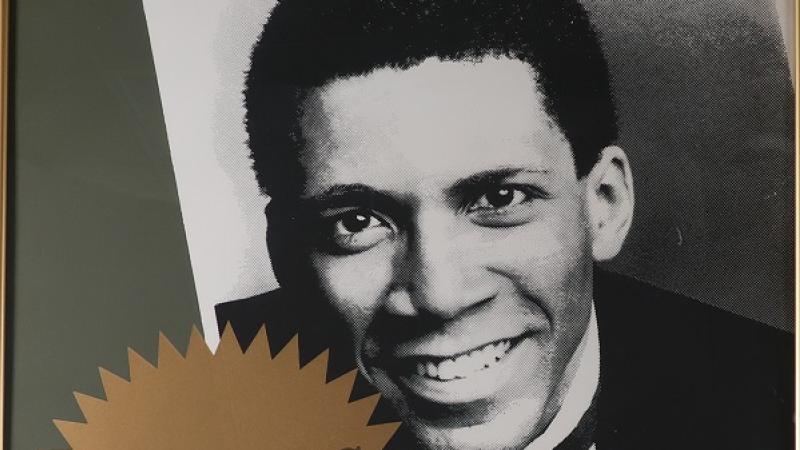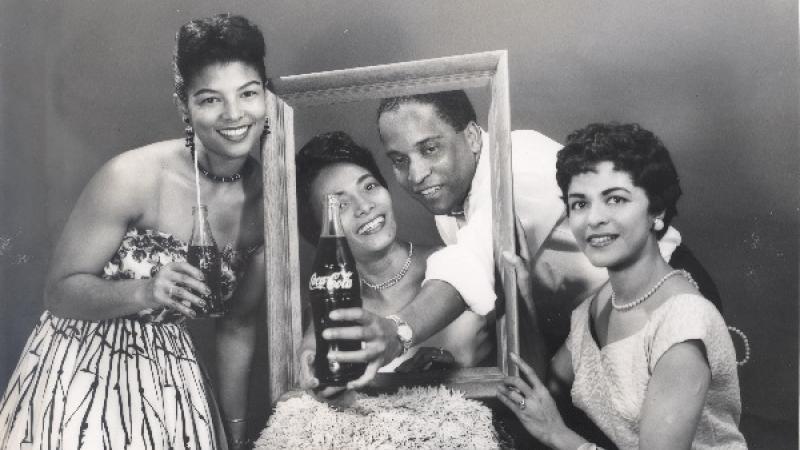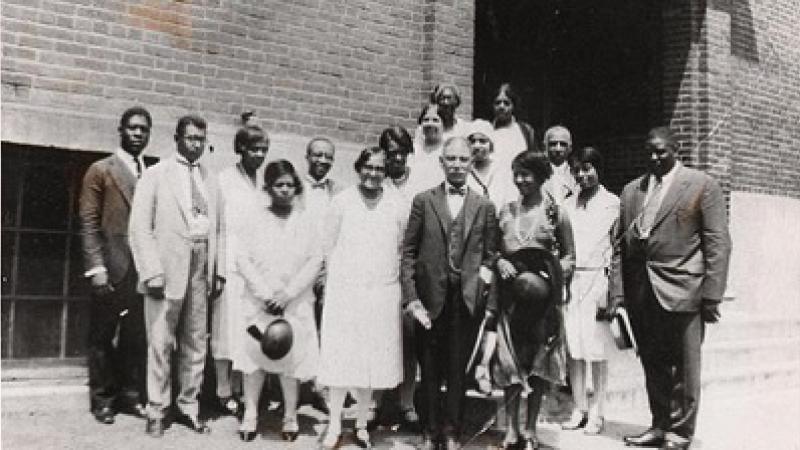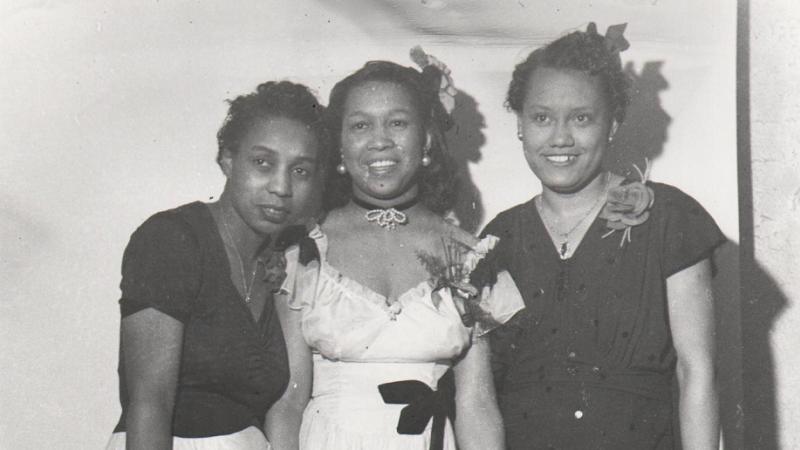
Collections at the Alexandria Black History Museum
Collections Highlights
The Alexandria Black History Museum’s (ABHM) mission is to enrich the lives of Alexandria’s residents and visitors, to foster tolerance and understanding, and to stimulate appreciation for the diversity of the African American experience. The ABHM uses its large collection to inspire the public to explore the integral relationship between African American history and other cultural traditions.
With a strong grounding in local Alexandria history, the collections reflect the national and international story of the African diaspora from the early 19th century through today. Photographs, paintings, furnishings, collectibles, and everyday objects provide a glimpse into the African American experience in Alexandria at home, work, and school, during worship and at recreation. Every item and record tell a story that links the past to the present.

Objects from the Collection
Important items from the museum collection representing the period from slavery to emancipation include: a receipt from Bruin’s Slave Jail in Alexandria, a manumission freeing a local enslaved woman, and a print entitled First Reading of the Emancipation Proclamation Before the Cabinet, which shows President Lincoln’s cabinet hearing the Emancipation Proclamation for the first time. There is an 1862 biography about Mary S. Peake, an African American teacher who educated the children of people who had formerly been enslaved, and a signed autobiography by Frederick Douglass, abolitionist and orator.
The struggle for civil rights is well represented in the collection beginning with the museum building, part of which is in the former Robert Robinson Library. This segregated library was built in 1940 in response to the 1939 sit-in orchestrated by famed civil rights attorney, Samuel W. Tucker at the Alexandria Library on Queen Street. Tucker would later be presented the key to the City of Alexandria in 1971, shown above.
Celebrating the achievements of more recent Alexandrians, the Museum owns a wet suit and gear that belonged to Shirley Lee, the world’s first African American female scuba diver, and a basketball signed by Earl Lloyd, the first African American to play in the NBA. Both attended segregated Parker-Gray High School in Alexandria. The Museum also documents important national events that affect Alexandria and beyond, such as posters and other ephemera from the campaign and election of Barack Obama, the first African American president of the United States.
African American material culture is represented by dolls, children’s books, toys, religious artifacts, tools, Black Memorabilia, and items relating to the death of George Floyd and the Black Lives Matter Movement.
IMLS Grant Received: Increasing Access to African American Archives
Increasing Access to African American Archives
Alexandria Black History Museum Receives Prestigious African American History & Culture IMLS Grant for Digitization Project
News Release, June 11, 2021
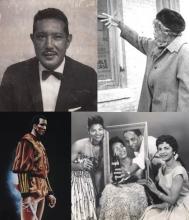
The Alexandria Black History Museum is a proud recipient of a $243,356 grant from the IMLS Museum Grants for African American History and Culture that will partially fund a multiple year project that will run from July 1, 2021 until June 30, 2023.
This highly competitive and generous grant will enable the museum to digitize, interpret, and make four important archival collections publicly accessible. Documents, photographs, objects and other material from Alexandrian activists Ferdinand T. Day and Annie B. Rose, Washingtonian opera singer Ben Holt, and public relations icon Moss H. Kendrix will be digitized as part of this grant. The digitization process will include creating or updating catalog records and scanning or photographing collections items, resulting in approximately 20,000 records with images for public access. The project will culminate in an exhibition on Moss H. Kendrix to open in the spring of 2023.
"As pillars of our communities, libraries and museums bring people together by providing important programs, services, and collections. These institutions are trusted spaces where people can learn, explore and grow,” said IMLS Director Crosby Kemper. “IMLS is proud to support their initiatives through our grants as they educate and enhance their communities.".
“We are excited and honored to be a 2021 recipient of the IMLS Museum Grants for African American History and Culture,” said Gretchen Bulova, Director of the Office of Historic Alexandria. “Support from IMLS permits us share Alexandria’s vibrant African American history with new and wider audiences as well as educate future generations about Black excellence and achievement in Alexandria.”
“By digitizing these collections,” shares Audrey Davis, Director of the Alexandria Black History Museum, “We will be able to provide increased public and research access, improve collections care by reducing future handling, and ensure best practices in collections management. It will also enable the Museum to develop future learning opportunities and programming for life-long learners, families, and school-age students.”
A series of small online exhibitions will also be developed that will explore the stories of these individuals from the archives and their respective roles in the overarching theme of civil rights and equity. These archival collections contain a wealth of material that will allow the Museum to better tell the story of the civil rights movement, self-empowerment, the African American image in American society, and the re-positioning of the African American in the wider American culture. These collections touch on important eras and issues, from slavery to the fight for equality. They bear witness to the stories of local grassroots activism that supported the desegregation of schools in Alexandria, the preservation of African American heritage sites in Alexandria, the global change in the depiction of African Americans in advertising, and the celebration and elevation of the civil rights movement through the operatic art form.
The digital content created by this project will support the invaluable work and ongoing commitment of Historic Alexandria and the Alexandria Black History Museum of telling the stories of the underrepresented and the marginalized and the central role that they play in the American story, both locally and nationally.

The Institute of Museum and Library Services is the primary source of federal support for the nation's libraries and museums. We advance, support, and empower America’s museums, libraries, and related organizations through grantmaking, research, and policy development. Our vision is a nation where museums and libraries work together to transform the lives of individuals and communities. To learn more, visit IMLS and follow us on facebook and twitter.
Historic Alexandria Collections Online
Historic Alexandria Collections Online
The Alexandria Black History Museum's growing online collections currently include the following. Browse or search the collections at the link above.
- The Black Lives Remembered Collection
- Carlton Funn Collection
- Parker-Gray School Collection
- Sherry Z. Sanabria Paintings
Collections Policies
Like all professional museums, the Alexandria Black History Museum abides by a Collections Policy in acquiring and caring for collections. The Historic Alexandria Museums worked together to create a set of collections policies that define the scope of each museum’s collections and set policies for caring for them in accordance with the special needs of each collection.
In accordance with the Museum’s collection policy, the object must date from the period of 1749 (founding of the City of Alexandria) to the Present Day, or be relevant to the interpretation and understanding of African American life during that stated historical period.
Collection Goals: Established in 1983, the Alexandria Black History Museum, serves as a resource which today houses collections that reflect the African American experience in Alexandria and Virginia from 1749 to the present. The adjacent Watson Reading Room, located in a building that formerly served as an African American church and school, contains a reference collection of nearly 4,000 volumes devoted to black history and cultural traditions. The Museum also supervises the Alexandria African American Heritage Park, a nine-acre satellite site that includes a 19th-century African American cemetery and memorial sculptures by artist Jerome Meadows.
The goals for all three sites are to:
- House and collect historic artifacts and information that reflect the African American experience in Alexandria and Virginia from 1749 to the present, with emphasis on the lives and accomplishments of local citizens. The scope of the collection is based upon objects of general historical value to the African American story in Alexandria with a secondary concentration on acquiring objects of significance to African American history in the scope of United States history . The collection includes specialized holdings on African American churches in the 19th and 20th centuries, and an extensive body of documents and photographs that relate to the segregated Parker-Gray High School and the 1939 sit-down strike in Alexandria, as well as notable African Americans and black organizations in the local area.
- Interpret the historic site and historical period 1749 through the present day via museum exhibits and educational programs. Major areas of research and interpretation are:
a) The legacy of Alexandria’s African American history and how it relates to the development of the City of Alexandria.
b) The history of enslaved and free black communities
c) The role Alexandria’s Contraband Community and the impact of their struggle for freedom before, during and after the Civil War
d) The lifestyles of Alexandria’s African American citizens during the years of Reconstruction, Jim Crow, and the emergence of the modern Civil Rights movement and the effects of Urban Renewal on the minority landscape of the City of Alexandria. - At the Watson Reading Room, house and collect published works on African and African American history, and primary and secondary source materials related to the history of Alexandria.
Acquisitions: Objects accessioned into the permanent collection by means of gift, bequest or purchase. Clear title to the object is held by the Museum.
